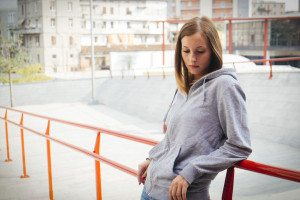Contributor: Jeremy Martinez, M.D., Dr. Martinez is an Addiction Psychiatrist and the Chief Executive Officer of Matrix Institute on Addictions in Los Angeles, CA
 The mother who buys heroin for her addicted son in withdrawal.
The mother who buys heroin for her addicted son in withdrawal.
The father who continuously gives money to his unemployed daughter, knowing she will spend the money on alcohol, rather than clothes for a job interview, as promised.
These are examples of codependent relationships that may occur in families that have a person addicted to drugs or alcohol.
Codependent Relationships
Codependent relationships are those that harm the individuals involved. A codependent person may make extreme personal sacrifices in order to support the bad behavior of another. In a relationship with an addicted person, the codependent individual is often called an enabler.
This person “enables” the addiction to continue, by supporting the behavior. Enabling often “covers-up” the problems that the addiction has created. This might include giving money, or agreeing to “call in sick” for the individual. Doing so gives the enabler a feeling of comfort, out of a desire to help – or feel connected to – the individual.
Neither codependent personality or enabler are defined in the DSM-5, the compendium of psychiatric diagnoses published by the American Psychiatric Association. [1] Despite no formal diagnosis, the concept of these dysfunctional relationships is critical to understanding how addiction affects families.
If you are reading this, and realize that you have been supporting the unhealthy behaviors of an addict in the family, do not feel guilty!
Family Dysfunction
 From childhood, we learn behaviors modeled by our parents, which may be healthy or unhealthy. In dysfunctional families, which may have had abuse, neglect, and/or substance use, the children may learn problematic behaviors for self-preservation.
From childhood, we learn behaviors modeled by our parents, which may be healthy or unhealthy. In dysfunctional families, which may have had abuse, neglect, and/or substance use, the children may learn problematic behaviors for self-preservation.
Psychoanalyst Karen Horney described the basic human need for affection and approval. [2] When a child has a parent addicted to drugs or alcohol, he or she may become overly compliant when seeking this affection and approval. Fearing abuse, a child in this family may avoid confrontation, and continue this pattern throughout life.
Developing enabling behavior is influenced by many factors, including the specific situation at hand. When there is an addicted individual in the family, one can become an enabler without having any of the problems described above.
Becoming Independent
How, then, does a person stop being codependent? Clinical treatment may include psychotherapy or medication (for the treatment of depression, for example), although not all codependency has the severity of a clinical disorder. [3]
Recovery from codependency requires learning appropriate assertiveness and boundary-setting. Essentially, refusing to “love a person to death.” There are several self-help groups that focus on codependent behavior, including Co-Dependents Anonymous (CoDA), Al-Anon, and Adult Children of Alcoholics.
 Having an addict in the family creates situations that make it extremely difficult to make the right decision.
Having an addict in the family creates situations that make it extremely difficult to make the right decision.
Rock Bottom
If your child is using heroin, should you kick him out of the house? Hitting “rock-bottom” may help the child realize their need for treatment.
But this child may also overdose and die while living on the street. For some individuals, Death is rock-bottom. For these heart-wrenching situations, there may not be a correct answer.
The solution is an analysis of the positive and negative outcomes of any given decision:
-
- What is the harm that may come to this individual by “helping” them, whether it be giving money or providing shelter?
-
- What is the negative outcome of not providing this help?
-
- What is the positive outcome of providing help?
-
- What are potential negative outcomes of providing “help”?
By thoughtful analysis, help from support groups, and clinical intervention (if necessary), it is possible to overcome codependency and make the best judgments for these complex family problems.
Community Discussion – Share your thoughts here!
Have you had experience with a codependent relationship? How has your relationship changed now that you or your loved one is in recovery?
References:
- American Psychiatric Association. (2013). Diagnostic and statistical manual of mental disorders: DSM-5™ (5th ed.). Arlington, VA: American Psychiatric Publishing, Inc.
- Horney, K. (1966). Our inner conflicts: A constructive theory of neurosis. New York: W.W. Norton.
- Cermak M.D., Timmen L. (1986). "Diagnostic Criteria for Codependency". Journal of Psychoactive Drugs 18 (1): 15–20.
The opinions and views of our guest contributors are shared to provide a broad perspective of addiction. These are not necessarily the views of Addiction Hope, but an effort to offer discussion of various issues by different concerned individuals.
Last Updated & Reviewed By: Jacquelyn Ekern, MS, LPC on May 26th, 2015
Published on AddictionHope.com
